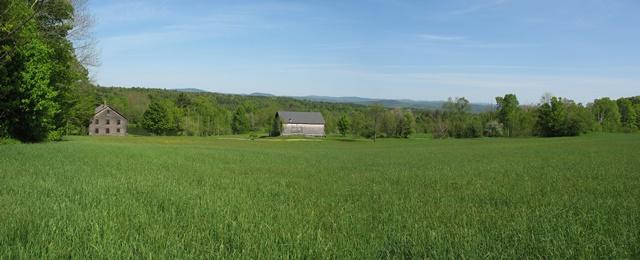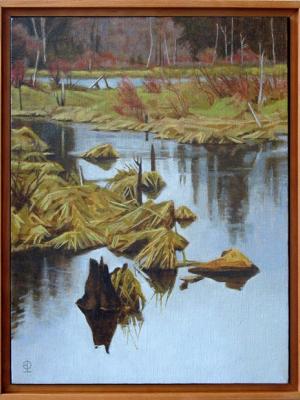Donating easement was something that had to be done first
- Tags:
- Land Conservation

Gretchen Abendschein donated an easement on the 212 acres in Acworth she and her husband called home for more than 30 years. Courtesy photo.
The hard decision for Gretchen Abendschein was to put the rapturously beautiful 200-acre farm she loved in Acworth up for sale.
The easy decision was to refuse the first serious offer she received.

“I told the realtor to tell them to go away,” Abendschein said.
What those buyers didn’t know was that for Abendschein, the easement is a document of devotion, priceless as a love letter kept in a top drawer for a lifetime. It represents the wishes of her late husband, Jerry Pfohl, who died in 2010, and the many conversations and plans the couple made for protecting the land they enjoyed together for nearly three decades while walking in the woods, gazing at the night sky, watching wildlife and sitting by the pond. “We wanted to make sure a place this gorgeous wouldn’t go to developers,” Abendschein said.
Pfohl, an artist, bought the property in 1966 and before moving there fulltime in the late 70s used it as a retreat, visiting from Manhattan, N.Y., to soak up the natural beauty, peace and quiet.
“This place replenished his soul, his psyche, his creative life,” Abendschein said.

Abendschein, a fellow artist who also now works in choreography, met Pfohl and the farm in 1980 when she arrived for a summer art workshop he was offering. “I came up here, my feet hit the ground and the thought came into my mind: I don’t think I ever want to leave this place.’ “And it just so happened that we fell madly in love with each other. We were very lucky.”
Pfohl, who worked in many mediums and sold his work through galleries in Vermont and New Hampshire, continued to be inspired by the land throughout his life. Most of his New England landscape scenes were painted or drawn from spots along the forest trails or looking out his studio’s windows.
“The land itself holds such a deep sense of tranquility. It’s a very rejuvenating property,” Abendschein said.
Mostly forested, about 50 of the 206 acres consists of prime agricultural soils. A rolling hayfield stretches out beyond the house and up a gentle slope to meet the sky.
“This has been a working farm, without cessation, since 1793,” Abendschein said. “That’s another reason we didn’t want this to be developed. Once you build on prime agricultural land, you don’t get it back. That’s it.”
Her neighbor, John Luther, the last dairy farmer in the town, now hays the fields just as his father did before him. Members of the community are welcome to use the trails that meander through the woods, and horseback riders, hikers, hunters and cross-country skiers have all benefited from the land remaining open.
With hilltop views all the way to Mt. Monadnock, the property without an easement would be vulnerable to being chopped up into pricey housing lots. Though Abendschein made the difficult decision to put the property up for sale so she could move to a smaller place in Vermont,
Though Abendschein made the difficult decision to put the property up for sale so she could move to a smaller place in Vermont, she has ensured that the land will remain as she and Pfohl knew and loved it.
“I feel very fortunate that I was able to spend thirty-three years of my life in such a spectacular location that fed me with its beauty every day,” Abendschein said. “Before leaving, I wanted to acknowledge my gratitude by conserving the land that gave so much to us and held our love for so many years."
